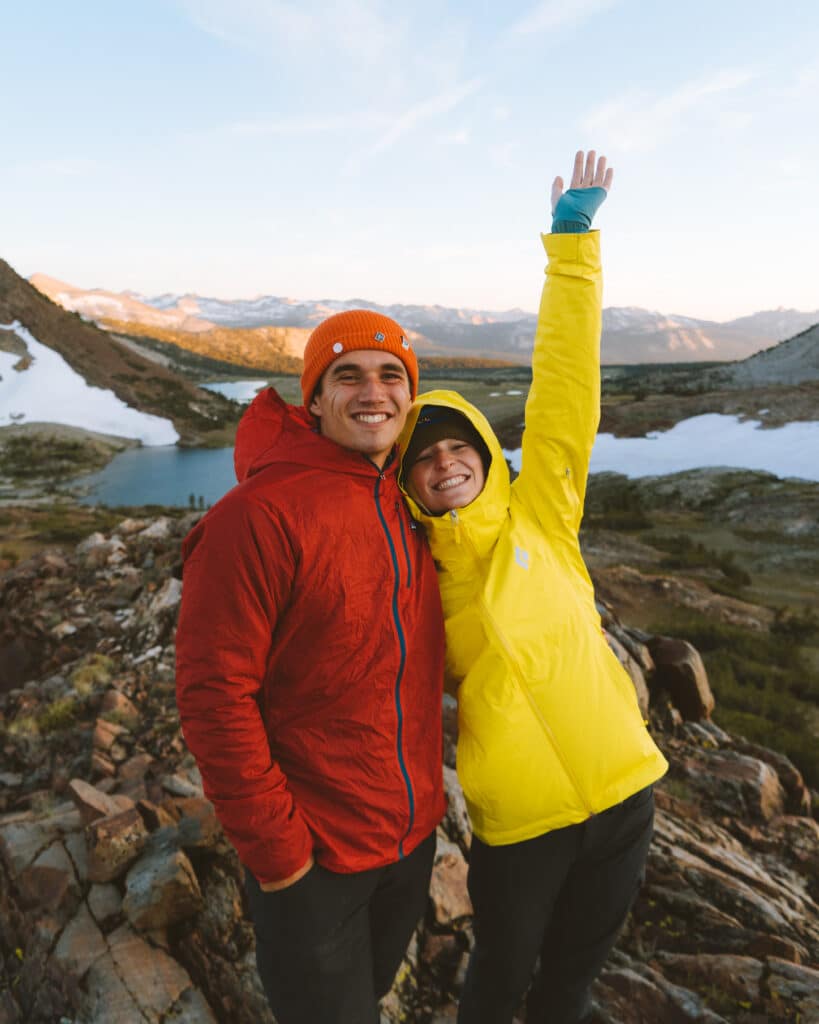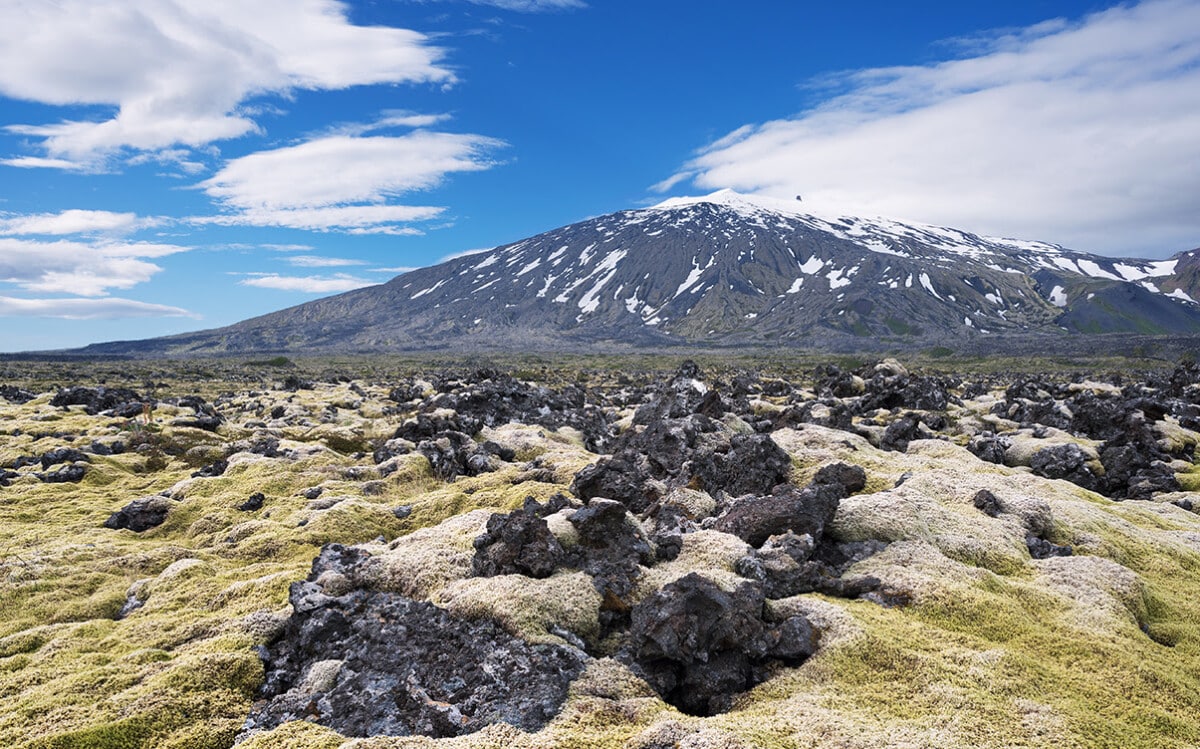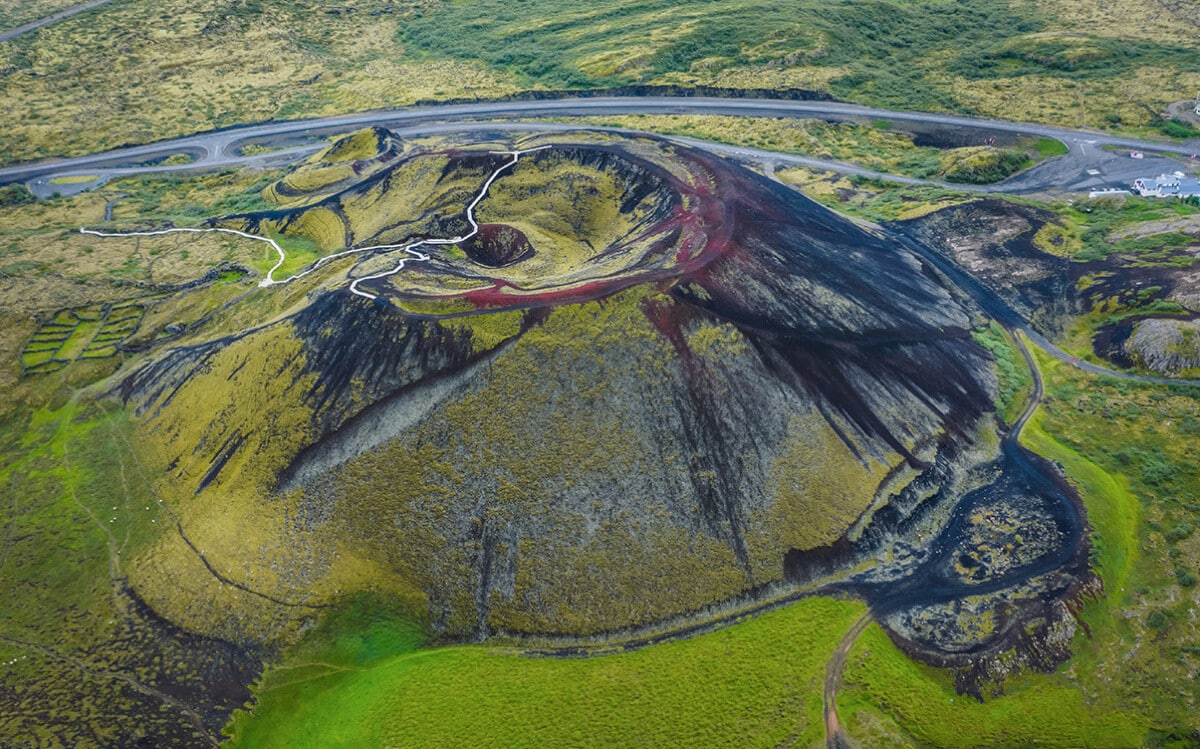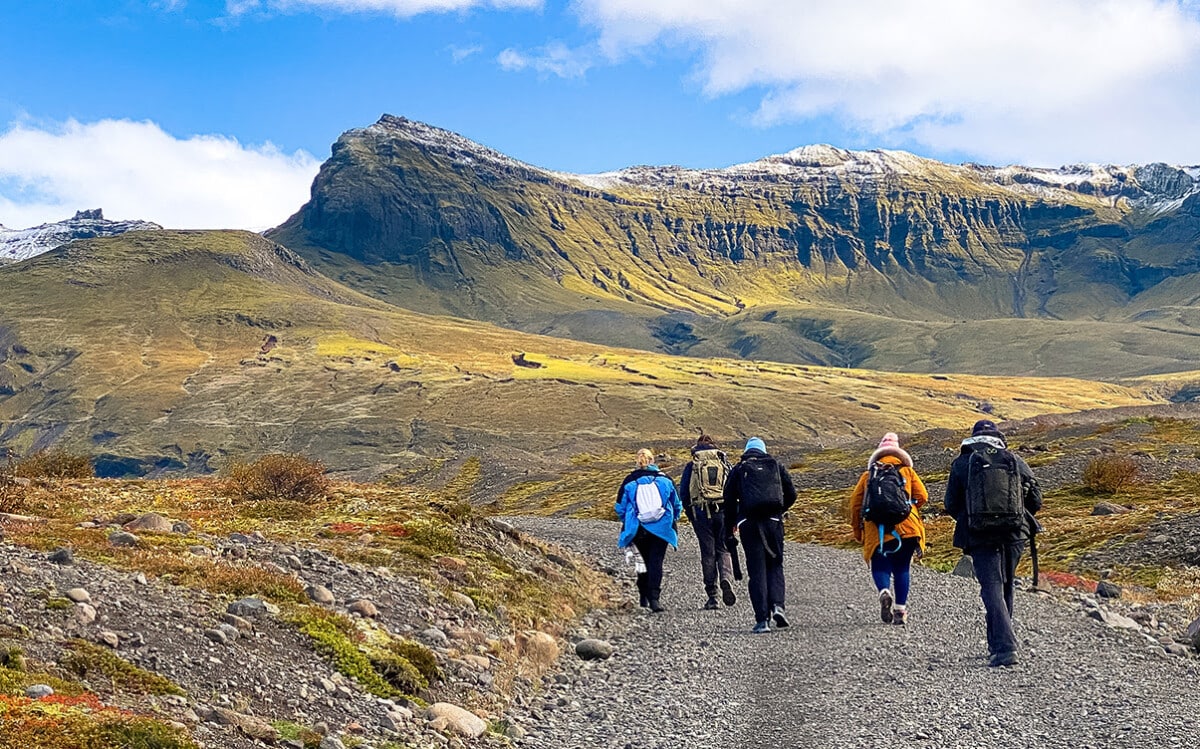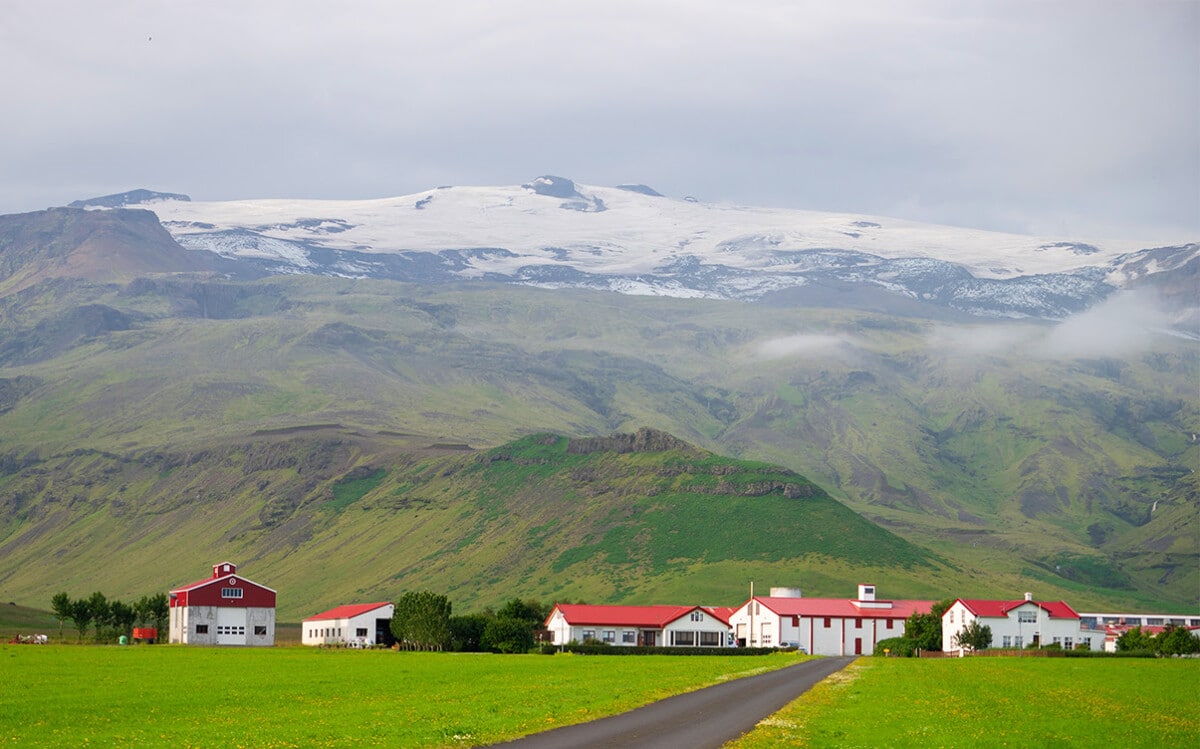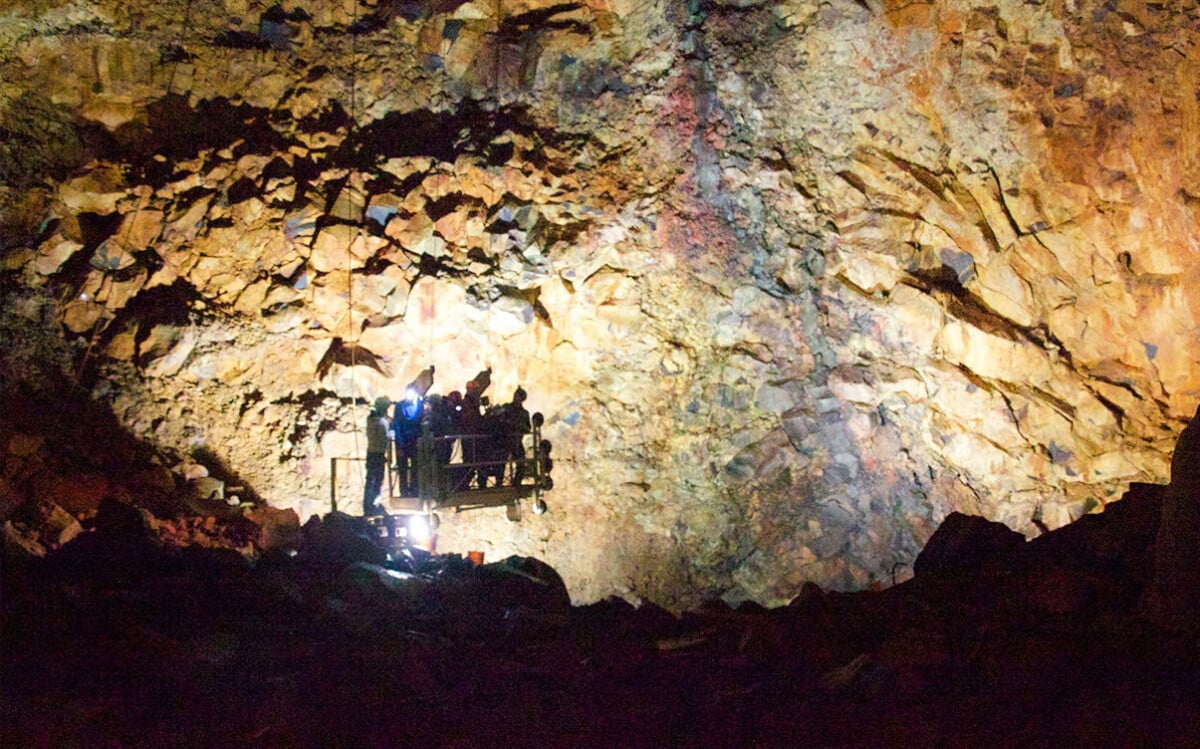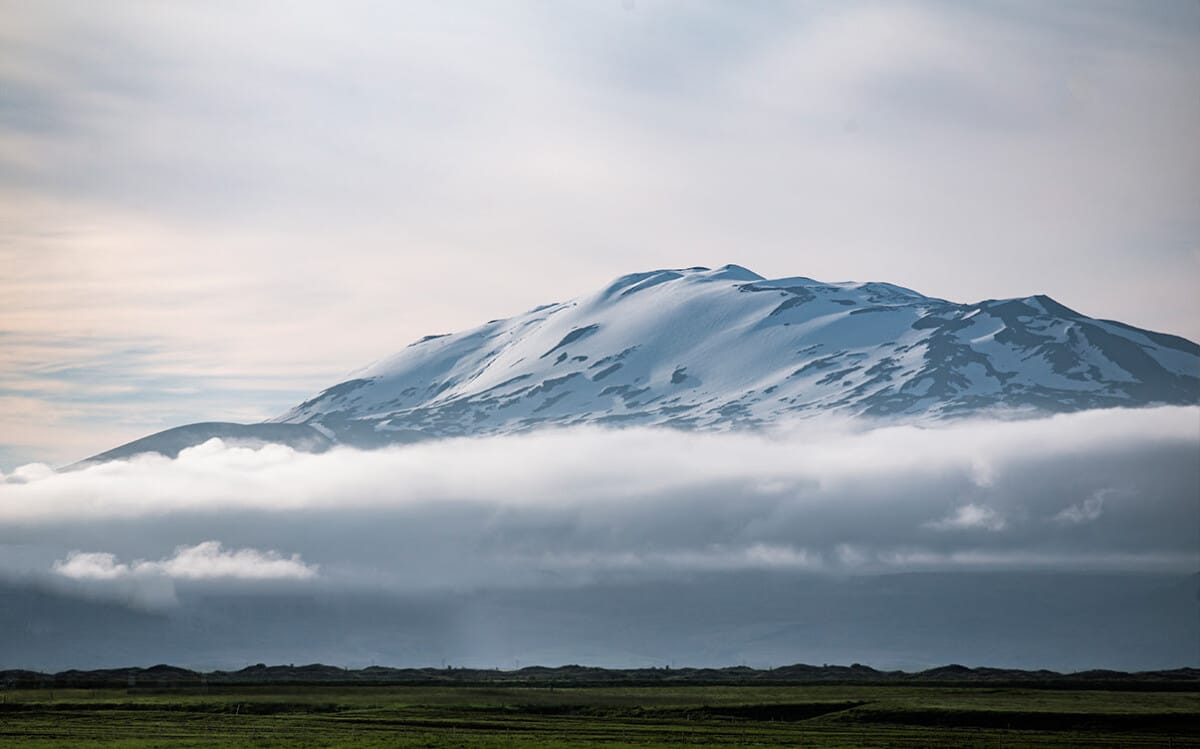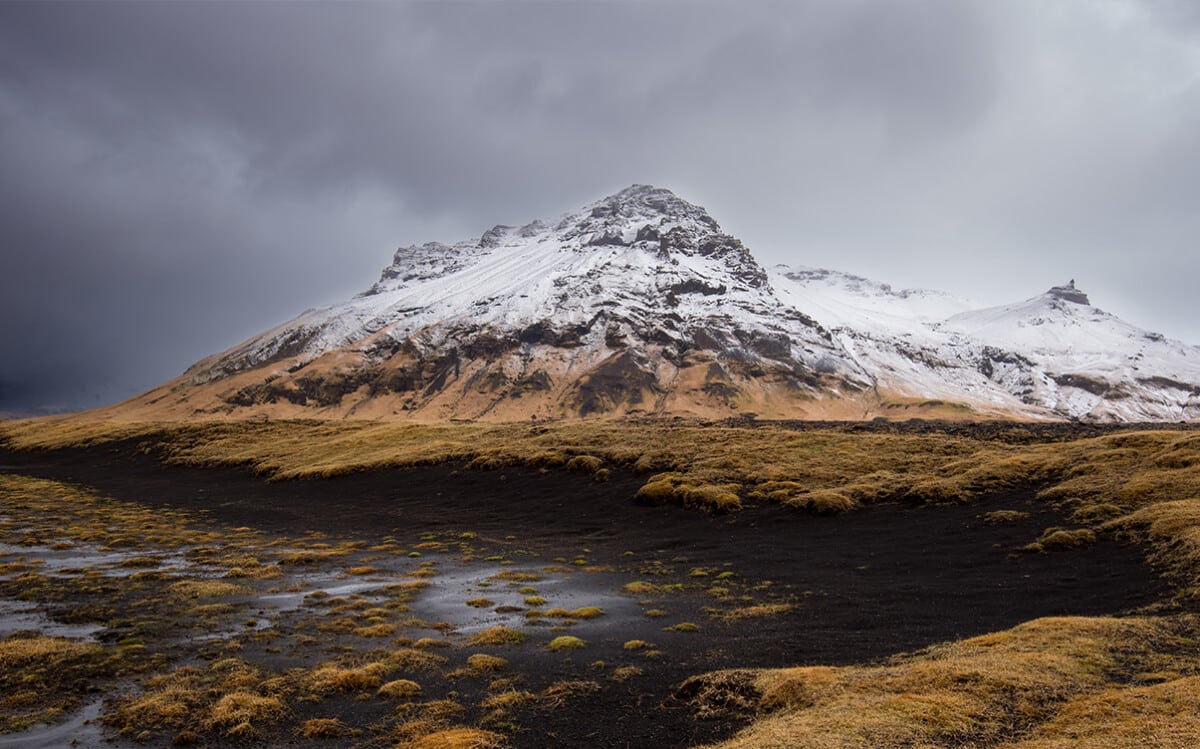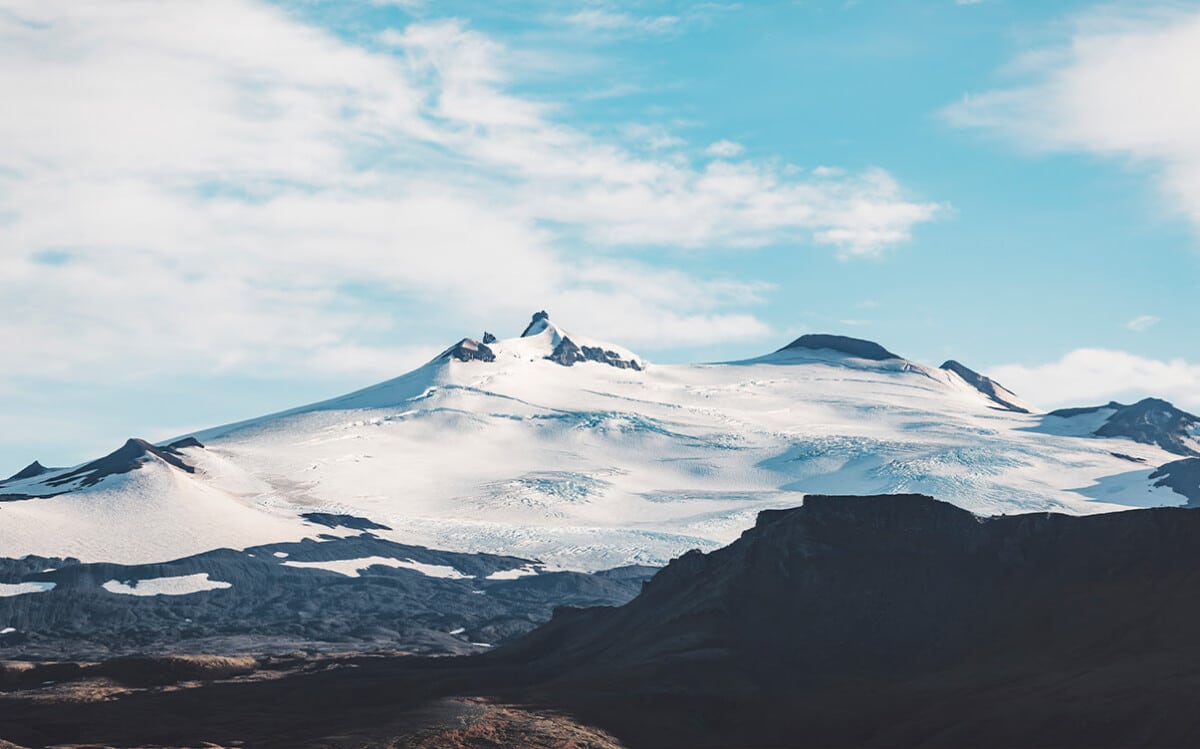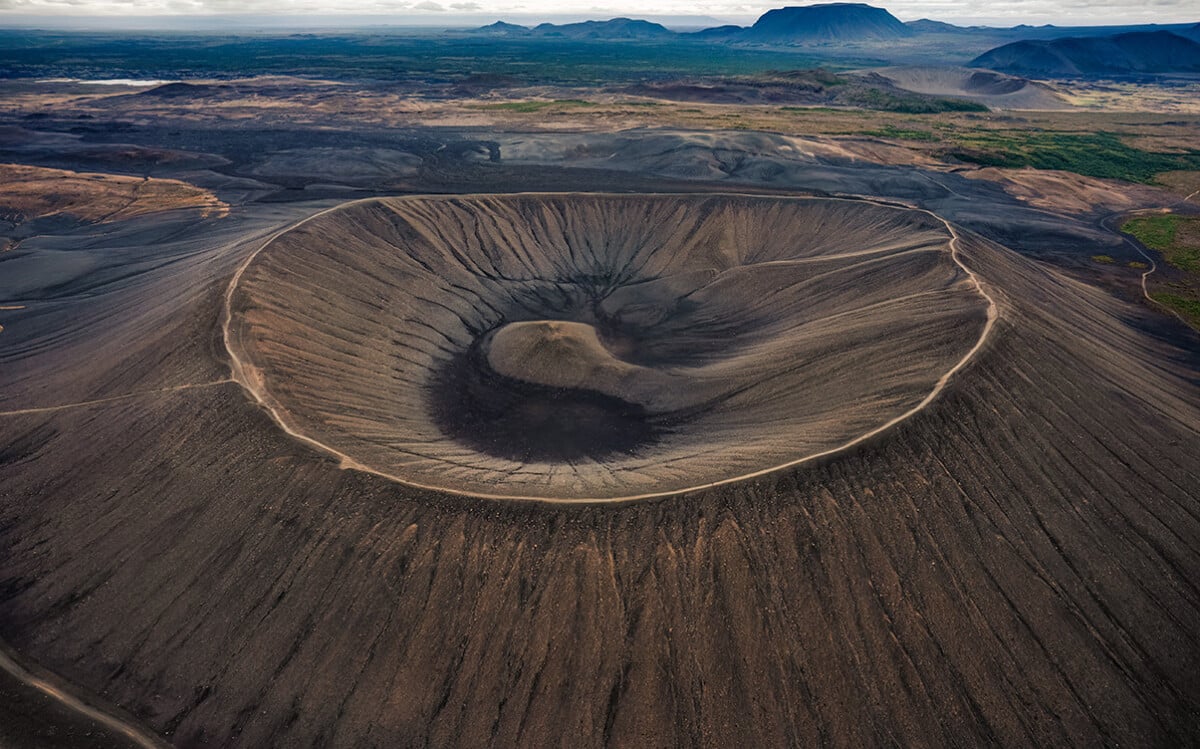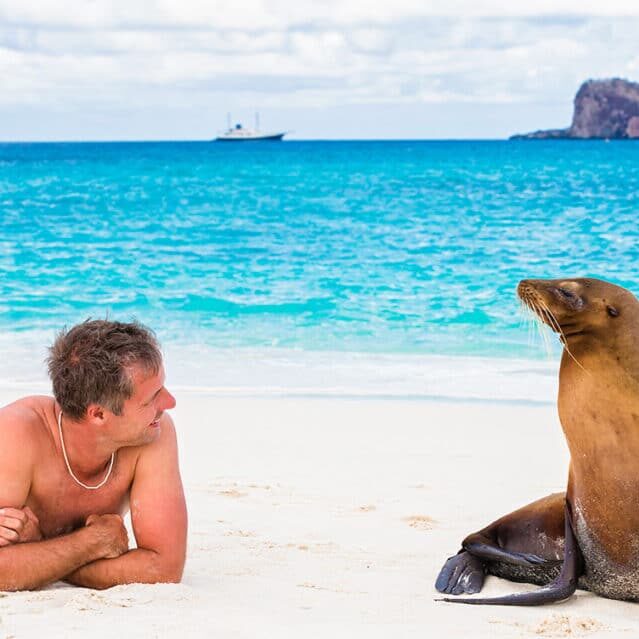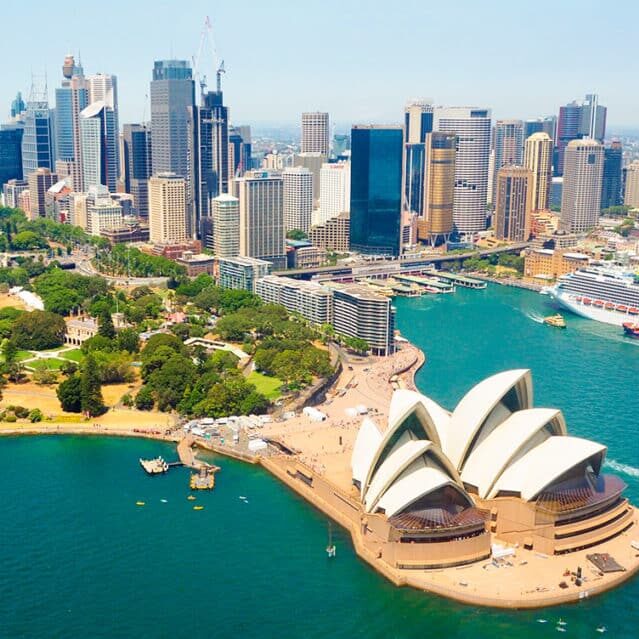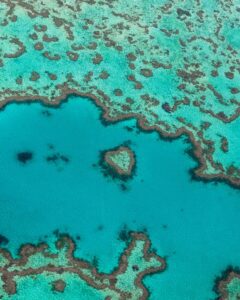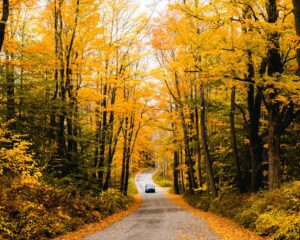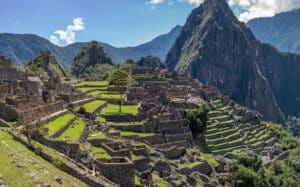What Are the Best Volcanoes to Visit in Iceland in 2024?
Disclaimer: This post may contain affiliate links. Please see our Disclosure Policy and Advertiser Disclosure for details.
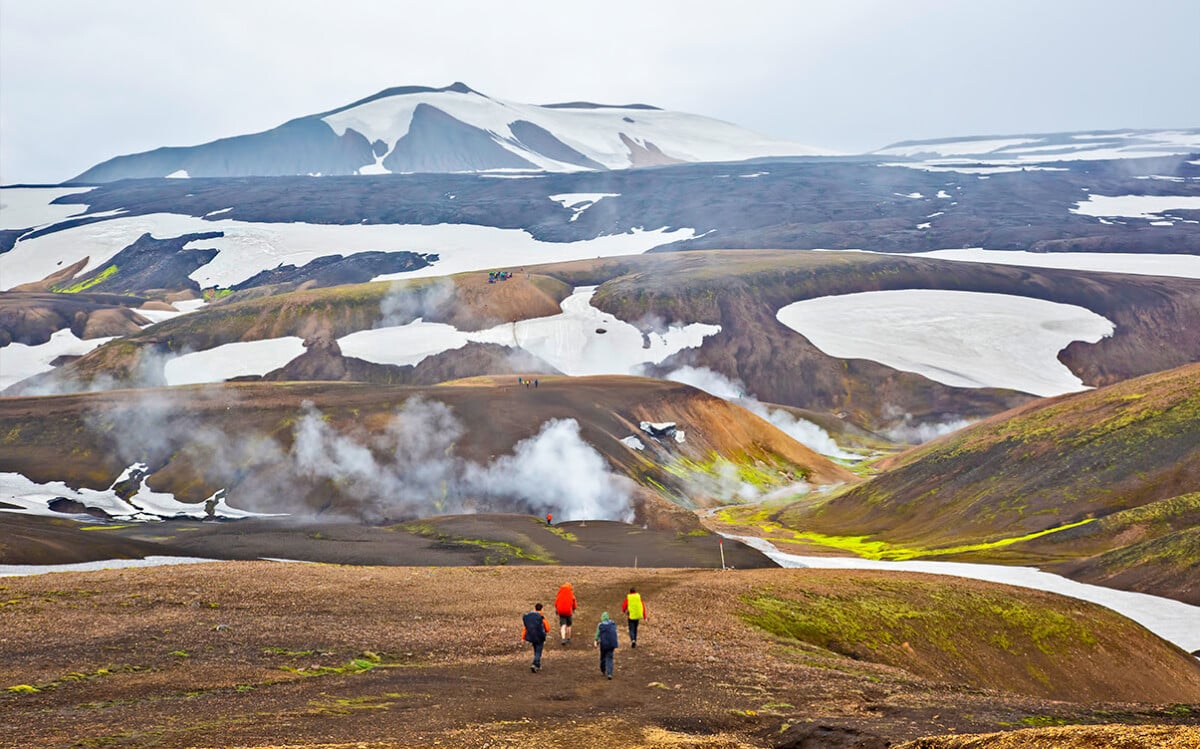
Iceland is a land of fierce and rugged natural beauty. From the waterfalls to the skies, you’ll never feel closer to nature than you will exploring Iceland.
Geologically speaking, Iceland is an island made up of the peaks of volcanoes, and many of the mountains around the country are, in fact, still volcanoes. Some of them are dormant and have been for centuries. Others are dormant but have only been still for a few years. Some are in a continual state of eruption. As a volcanically active region, Iceland is an incredible destination to see the fury and turmoil from beneath the surface, brought to the world above.
What are the best volcanoes to visit? That changes frequently, as the geological activity can vary, and you need to be well aware of what you’re going to get. Be prepared to change your plans if conditions change, and enjoy!
Dormant or Active Volcanoes?
Before visiting Iceland to see the volcanoes, you have some choices to make. The biggest one is whether you’re looking to climb the slopes of a dormant volcano, or if you want to see an active volcano, feel the heat of the lava, and see it bubble, smoke, and churn.
Obviously, you want an active volcano, right?
Well, maybe.
If you’re picturing an active volcano as a lava-spewing, smoke-billowing eruption out of a disaster film, you’re a little off-base. While those do happen from time to time, they’re quite rare; the active volcanoes in Iceland are a lot calmer. You pretty rarely see violent bursts and roiling smoke. More likely, you’ll see a little bit of bursting lava, some steam, and not a lot else. Here’s a live webcam view, for example.
Dormant volcanoes are a lot like mountains, and there’s not always much to see other than some unique geological shapes and the signs of lava rather than plant life all around you. They have a kind of desolate beauty, but they aren’t exciting compared to a more active volcano. The older dormant volcanoes are a lot more beautiful with the return of nature, natural hot springs, and even cave exploration available, depending on where you’re going.
Active volcanoes, on the other hand, have a stark and primal sort of allure to them. The trouble is, you’re not really allowed to get very close to them. Your hikes are long and arduous, the view isn’t going to be close – there’s no rope bridge over a caldera like you might picture from cartoons – and while it’s still a unique and incredible experience, many people picture something a lot more intense and end up slightly disappointed.
There is, of course, always the chance that the eruptions are much more violent than average when you view them, and it’s an incredible experience if you get to see it, but don’t count on it.
Which should you visit?
The truth is, they’re very different experiences. Visiting one of the currently active volcanoes is expensive and requires a helicopter tour, at least as of right now because it’s not safe enough to get close to it on foot. Once it’s declared safe enough to do so, it won’t be as exciting, but that’s not necessarily a bad thing.
Visiting the dormant volcanoes is a lot more of an up-close and personal experience. You can see firsthand how the volcanoes have shaped Iceland over the millennia, and you can see unique geological features you can’t find anywhere else. Plus, it’s a lot less expensive since you don’t need to rent time on a helicopter to take the trip. You may need to rent a Super Jeep to do it, but that’s fun in its own way too.
So, really, it depends on what you want to get out of a volcano experience. If you want to see the unbridled fury of the interior of the earth breaking through to the surface, the active volcano tours are expensive but incredible once-in-a-lifetime experiences. On the other hand, if you prefer more self-guided hiking experiences and the chance to explore on foot, the dormant volcanoes are the best option.
Getting Close to the Action
There are essentially two ways you can see an active volcano in Iceland.
The first is to hike from a base town or station out to the site of the volcano. Depending on the volcano and its current activity status, you may or may not even be allowed to do this. The more active a volcano is – and the more uncertain geologists are about it – the more likely you will be to either need a guide or be prohibited from visiting it entirely.
A big example of this is the recent Grindavik eruption. This wasn’t in a known volcano, but rather a fissure breaking through to the surface. It’s very uncertain and very dangerous, to the point that a nearby spa (one of our favorite lagoons, Blue Lagoon) has been closed off, and because it’s close, there’s the potential for danger in getting there. Similarly, the nearby town has been largely evacuated for the safety of the people who live there.
This eruption is fierce and beautiful, but you’re absolutely not allowed to hike anywhere near it. You can, however, still see it.
How?
A helicopter.
A significant tourist industry in Iceland is the helicopter tour. Whenever there’s an active volcanic eruption, whether it’s a fissure eruption, a caldera, or anything else, helicopters are the safest way to get close and see it without being in (much) personal danger. Sure, volcanoes are always unpredictable and helicopters are some of the most dangerous vehicles you can be in, but it’s still a lot safer than being up close on foot.
The downside to helicopter tours is that they’re generally very expensive. The cheapest tours start at around $450, and it’s a lot more common to see tours ranging closer to $1,000. That’s per person, too, and it’s more expensive if you want a private tour rather than one with a group. Keep in mind, too, that these are limited in quantity and availability, so they fill up fast. Book early if you can.
There are also plane tours you can try. They’re cheaper than helicopters, but they aren’t allowed to get as close, so you won’t have as good of a view of the activity. On the other hand, planes are safer than helicopters, so that’s not necessarily a bad thing.
Visiting Iceland’s Best Volcanoes
If you’re interested in taking a trip to visit volcanoes in Iceland, there are a few that stand out over the rest. We’re not talking about the currently active volcanoes, though. Since this post is meant to be more evergreen, the goal isn’t to talk about quick-lived and short-term eruptions, but rather the larger, more dormant, and more beautiful volcanoes you can visit. Here are some of the best options available to you.
Eyjafjallajokull
If this particular string of consonants looks familiar to you, that’s because this is the volcano that started it all. Well, by “all” we mean the recent boom in volcano tourism in Iceland. Eyjafjallajokull erupted in 2010, causing a huge disruption in flights through the area and across Europe, and leaving us with thousands of intense and beautiful photos of a modern eruption. Fortunately, despite being a huge eruption, this volcano is relatively isolated and it didn’t really damage anything about Iceland itself.
Since this particular volcano has been dormant for the past 14 years and counting, it’s considered pretty safe to visit, though there’s always the possibility of another eruption. Don’t worry too much; seismic activity heralds an eruption long before it bursts free, so if there are signs, the volcano will be closed.
Despite being the currently most famous and well-known volcanoes in Iceland, this actually isn’t one of the best ones to visit. It’s just one that people who otherwise never looked at Iceland have seen on the news.
Thrihnukagigur
This volcano is a unique experience the likes of which can’t be found anywhere else in the world. It’s a long, long dormant volcano, which hasn’t erupted in over four thousand years. The chances of it erupting any time soon are essentially zero.
So what makes this such an incredible and unique experience? Well, Thrihnukagigur is the only volcano you can actually go inside. The magma chamber is a large and open space where lava once flowed, big enough to fit the Statue of Liberty inside it with plenty of room to spare. It’s like a cave diving expedition, but full of vibrant colors and unique geological formations only visible here and nowhere else.
If you visit one dormant volcano in all of Iceland, it should probably be this one.
Hekla
Hekla is one of the more famous volcanoes throughout Iceland. It’s been an active volcano with fairly regular eruptions since the Middle Ages, but it’s also very unpredictable. Sometimes there are eruptions spaced only nine years apart. Conversely, it once went 121 years without an eruption. It last erupted in 2000, so it’s potentially due for another one.
As a picturesque volcano, Hekla is an interesting one to visit and see how it has affected the nearby countryside. Each time it erupts, it does so with a powerful explosion, and it has been responsible for more destruction than nearly any other regularly active volcano in Iceland.
Katla
Katla is a linked volcano in the same chain as Eyjafjallajokull and is considered its nearest neighbor. When one erupts, the other is likely soon to follow, though “soon” on a geological scale can mean years or decades in between. Indeed, since Eyjafjallajokull erupted in 2010, Katla is overdue for an eruption of its own, and it’s constantly rumbling with the threat of that eruption. Local authorities regularly warn people that it could erupt at any time.
Despite this, it has been over 100 years since the last time Katla erupted. When it does blow, it will be catastrophic, causing a huge explosion, a lot of ash, and the heat melting nearby glaciers and causing immense flooding in an event known as a Jokulhaups.
So, is Katla dangerous? Maybe, maybe not. It has “let off steam” several times over the last century, so the pressure building up isn’t as great as it could be, and it last vented in 2011. It’s possible that it could go decades longer without exploding. Or it could go up any day! That’s part of the draw to volcanoes; you never know what you’re going to get.
Katla is exceptional for one reason above all, which is that the latent heat has formed an ice cavern that you can visit and explore. It’s an incredible and unique experience and is sure to disappear if the volcano blows again, so there’s never a better time to see it.
Snaefellsjokull
This volcano is broadly considered both the most visited volcano in Iceland and possibly the most beloved. It’s located on the very tip of the Snaefellsnes peninsula, so it forms an incredible backdrop for photos from the surrounding coastline, and it’s simply beautiful to see. Fun fact: this inspirational volcano has been the impetus for the creation of tons of art and culture, including the location of the cave that leads to the center of the earth in Jules Verne’s Journey to the Center of the Earth.
The only reason to exclude this volcano from any volcano tourism you want to do is if you’re a volcano hipster and don’t like visiting a volcano that has been featured in a movie, or some other wild reason. Trust us, it’s a great one to see.
Hverfjall
Hverfjall is perhaps the easiest volcano in Iceland to see and visit. It’s located very close to the ring road, so if you’re already doing a waterfall tour or otherwise driving, it’s trivial to reach. It’s a simple hike, and you can get right up to the caldera and hike around it, which is just over half a mile in diameter. It’s easy to visit, easy to hike, and located close to other tourist destinations, so why not add it to your itinerary?
Have you ever visited Iceland and checked out the volcanoes? If so, which ones were your favorite? Let us know in the comments!
You may also enjoy:
